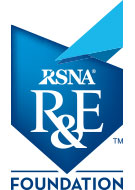Researching the Effects of Brain Tumor Removal on Language
Advanced and early imaging can prevent patients from losing language function following surgery


Task-based functional magnetic resonance imaging (fMRI) is useful to identify language-related cortical structures in the brain prior to an operation for brain tumor removal. However, using current methods, it is impossible to distinguish pre-operatively between the areas of the brain crucial to expressive language function—where resection could lead to mutism—and supportive areas, which can be safely resected.
Language reorganization refers to the change in location of the areas of the brain cortex assigned to sustain normal language functioning. This phenomenon is driven by the impairment of the normal language areas from the growth of a tumor. The process may represent a strategy of the brain to overcome the clinical deficits that arise from the presence of a tumor growing near eloquent language areas.
In his 2021 Siemens Healthineers/RSNA Research Fellow Grant, Luca Pasquini, MD, PhD, research fellow in the Neuroradiology Service at Memorial Sloan Kettering Cancer Center in New York, and colleagues looked to boost the information obtained from “gold-standard” fMRI tasks by performing graph theoretical analysis of active language-related areas and investigating pre-operative biomarkers of language reorganization.
“Gold-standard presurgical planning with fMRI includes various tasks to test patient's functions. Most frequently language and motor, but possibly others, such as sensory, memory or face recognition. In our case we focused on language function,” Dr. Pasquini said. “Gold-standard tasks for this purpose include primarily phonemic fluency, which consists of the patient generating silently—thinking of—words that begin with a given letter. A full panel of fMRI tasks for a complete preop planning should also include sentence completion—silently generating action words that fill a blank in a given sentence—and semantic fluency—silently generating words that belong to a given category, such as 'cities,' 'vegetables' or 'pets.’”
Watch Dr. Pasquini discuss his research on how radiology can assist in brain tumor removal to maintain language function:
Study Used fMRI to Identify Tasks Activated by Language
In the study, a database of right-handed patients with left brain gliomas was collected, including subjects who performed preoperative task-based fMRI and underwent awake surgery with direct cortical stimulation.
“In about 95% of right-handed patients (majority of the population), the left cerebral hemisphere is dominant for language. This means that the language cortex, the brain area that sustains the capability of speaking, is in the left hemisphere,” Dr. Pasquini said. “Selecting left-hemispheric tumors in right-handed patients allows us to infer the presence of language reorganization by looking at the language dominance: a deviation from the normal percentage of left dominance in right-handed patients (95%) may suggest recruitment of the right hemisphere for language function reorganization.”
The patients were classified according to task-based fMRI results from phonemic fluency tasks plus clinical data regarding the patient (demographic info, clinical speech deficits) and tumor (location, pathology and grade, size, tumor genetics).
fMRI was used to depict the areas of the brain that were activated by the patient performing a specific function, in this case a phonemic fluency task. According to Dr. Pasquini, fMRI can image distortions in the magnetic field caused by the iron content of the blood supplying the areas of the brain that are activated by the task.
The functional language networks were developed from the fMRI time signal of active clusters labeled on fMRI maps, by means of statistical inference techniques. Then, a novel graph theoretical framework was developed by the researchers to identify and analyze the most influential nodes in the brain based on optimal percolation, which is the problem of finding the minimal set of nodes whose removal from the whole would fragment the system into disconnection.
Dr. Pasquini and colleagues showed that language reorganization is influenced by age, sex and tumor location near eloquent areas, such as Broca’s and Wernicke’s areas, which are cortical areas specialized for production and comprehension of human language.
Language reorganization can also be influenced by certain molecular features of the tumor such as methylation of O6-methylguanine-DNA methyltransferase (MGMT)—a DNA repair enzyme that rescues tumor cells from alkylating agent-induced damage—in high-grade gliomas. Another example is the lack of fibroblast growth factor receptors (FGFR) mutation, which, if present, can be implicated in a wide variety of cancers.
A possible explanation, according to Dr. Pasquini, resides in the longer survival and less aggressive behavior of neoplasms harboring these molecular changes. Tumors of different location produce different effects on brain connectivity, both locally and in distant regions. Furthermore, brain connectivity analyses showed that language reorganization develops over a time frame of six months to 1 ½ years after surgery, and is characterized by the progressive recruitment of the right hemisphere in language function. Such connectivity changes correlate with the results of intra-operative stimulation and carry clinical relevance, helping the patients to compensate speech deficits.
For More Information
Learn more about R&E Foundation grants at RSNA.org/Research/Funding-Opportunities.
Read previous RSNA News stories about R&E Foundation grants: